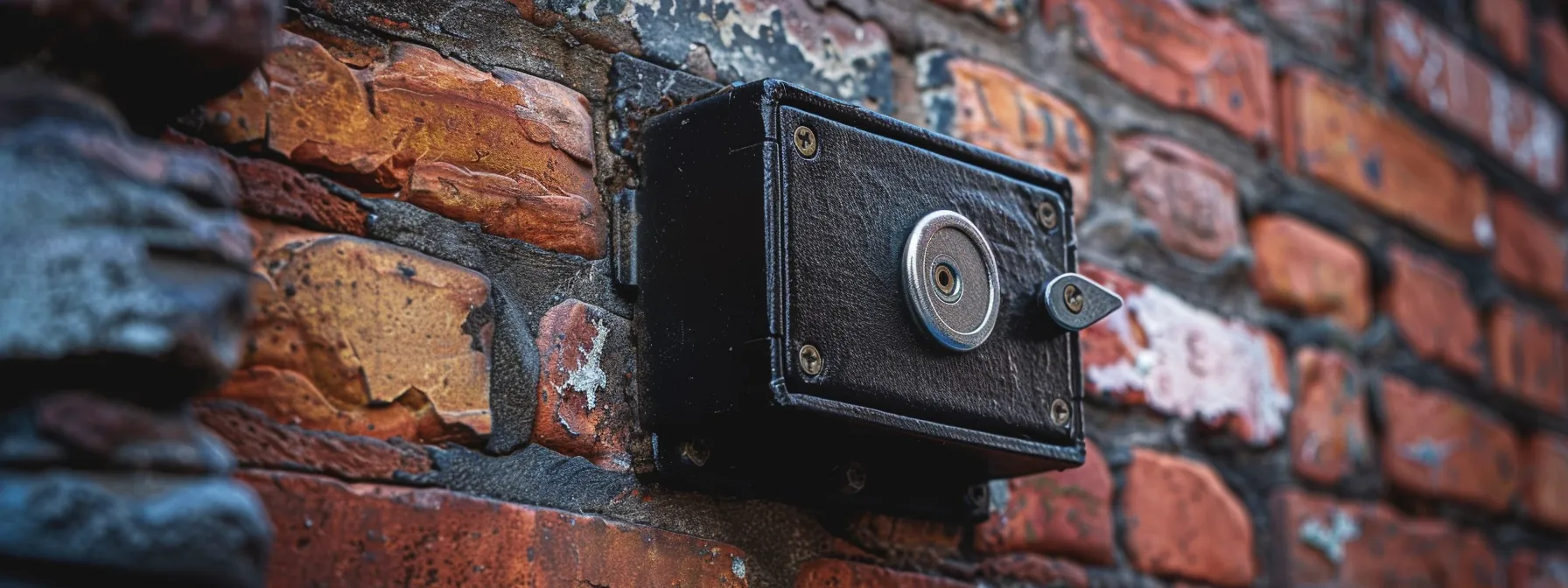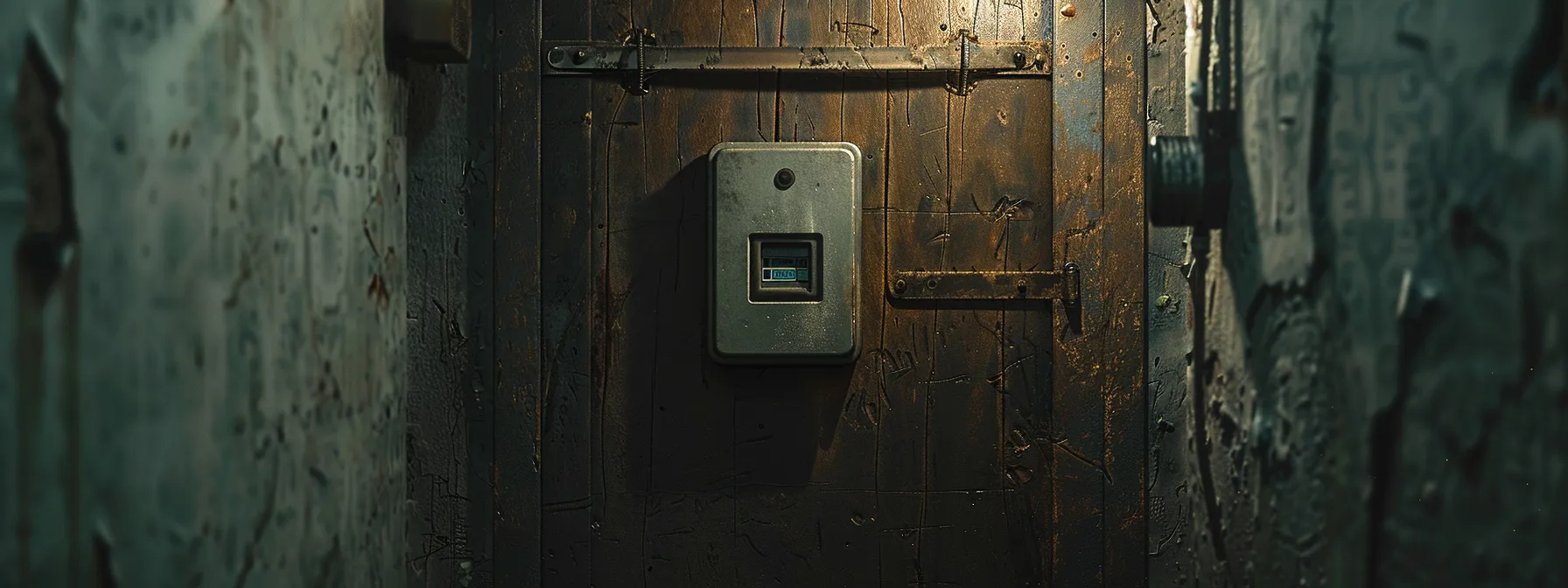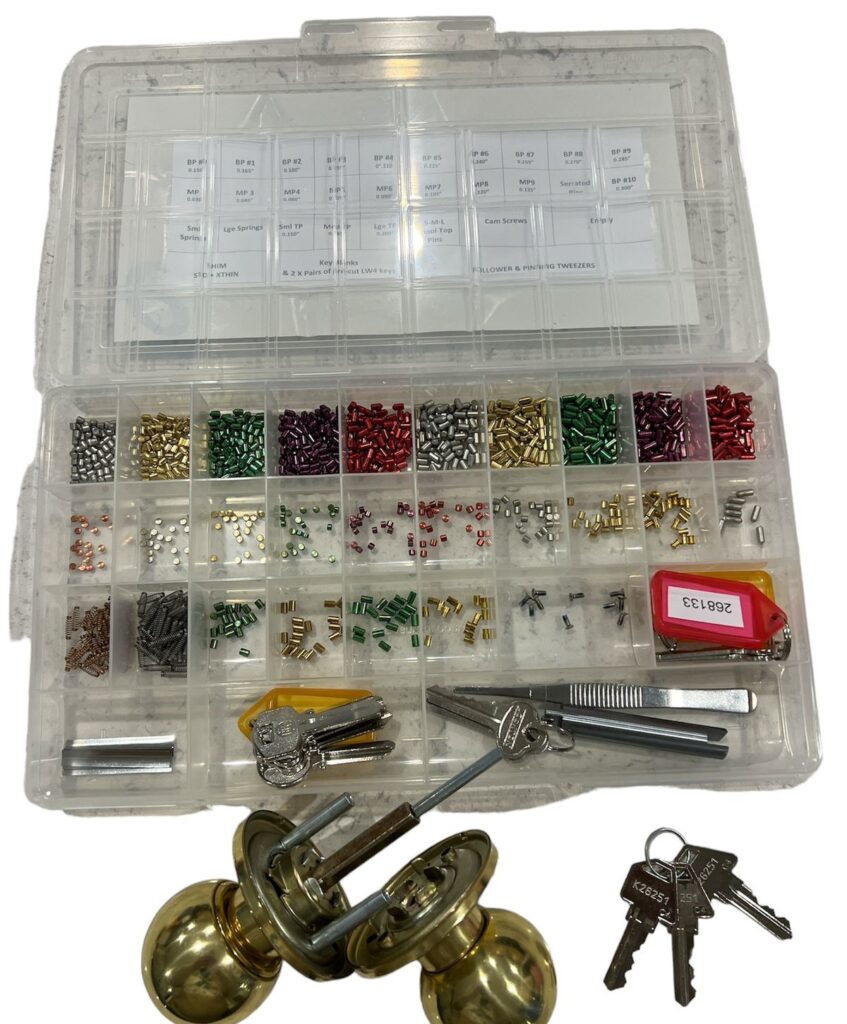Installing a keysafe can greatly enhance your security, but it can also pose risks if not done correctly. Many overlook crucial safety precautions during the installation process. This comprehensive guide will cover essential safety measures, from choosing the right location for your keysafe to the tools you need, like a drill and angle grinder, ensuring a safe installation. By addressing common mistakes and providing post-installation tips, this article aims to help you avoid potential hazards and maintain your keysafe effectively. Engage with this content to secure your property safely and avoid costly locksmithing mishaps.
Understanding the Importance of Keysafe Installation Safety

Improper keysafe installation poses significant risks, including increased vulnerability to crime and potential operational failures Business Lockout Services. Adhering to essential safety precautions offers numerous benefits, ensuring both security and efficiency. This section will also explore legal considerations and compliance with standards set by the Master Locksmiths Association, helping to mitigate risks and safeguard properties during construction and beyond.
Risks of Improper Keysafe Installation
Improper installation of a keysafe can lead to significant security vulnerabilities, exposing properties to theft or unauthorized access. For instance, if a combination lock is not mounted securely to the wall, it may easily wear out or be compromised, leading to potential operational failures. Engaging qualified locksmiths for installation ensures that these risks are minimized, providing peace of mind and enhancing security measures for both residential and commercial properties:
Benefits of Following Safety Precautions
Following essential safety precautions during keysafe installation yields significant benefits, such as increased security and efficiency. Utilizing professional services like Unlock Master Locksmiths ensures the correct installation of keypads and screws, minimizing the risk of operational failures. By prioritizing these safety measures, property owners can avoid costly thefts or business lockout situations, enhancing overall protection for residential and commercial environments:
- Enhanced Security: Proper installation reduces vulnerability to break-ins.
- Increased Reliability: A well-secured keypad prevents operational issues.
- Compliance Assurance: Following safety standards mitigates legal risks.
Legal Considerations and Compliance
Understanding legal considerations and compliance is critical when installing a keysafe. Engaging skilled professionals, such as those providing Emergency Locksmith Services or Mobile Locksmith Services, ensures adherence to regulations and industry standards. Property owners can mitigate legal risks and avoid potential liabilities by following these guidelines, ultimately enhancing the safety and security of Residential Locksmith Services:
The safety of your keys matters. Now, it’s time to figure out where to place the KeySafe for the best protection.
Choosing the Right Location for Your Keysafe

Choosing the right location for a keysafe is crucial for maximizing security and efficiency. This section will cover assessing the security of potential locations, avoiding common vulnerable spots, ensuring accessibility for authorized users, and considering environmental factors that may affect keysafe placement. Each of these elements plays a vital role in achieving optimal keysafe installation safety precautions.
Assessing the Security of Potential Locations
Assessing the security of potential locations for a keysafe is crucial to ensure its effectiveness. Property owners should examine areas that are well-lit and visible to deter potential intruders while maintaining accessibility for authorized users. Keysafe installations should avoid secluded or hidden spots that could attract criminal activity, as this enhances overall security and provides peace of mind.
Avoiding Common Vulnerable Spots
Avoiding common vulnerable spots is essential for the effective installation of a keysafe. Property owners should steer clear of secluded areas, such as behind large bushes or in dimly lit corners, as these locations can attract unwanted attention and increase the risk of theft. By placing the keysafe in a visible and accessible area, ideally near entry points that are monitored or frequented by homeowners, the likelihood of unauthorized access can be significantly reduced, enhancing overall security measures.
Considering Accessibility for Authorized Users
Considering accessibility for authorized users is essential when determining the location of a keysafe. The chosen spot should allow easy access for individuals who are authorized to use it, such as family members, employees, or trusted service providers. Additionally, property owners can assess their daily routines and frequently visited areas to ensure that accessing the keysafe feels intuitive and convenient, greatly enhancing its effectiveness in facilitating timely access:
- Identify key holders and their access needs.
- Opt for locations that are within easy reach for users.
- Evaluate the most frequented entry points for optimal placement.
Environmental Factors Affecting Keysafe Placement
Environmental factors significantly influence the placement of a keysafe. For instance, areas exposed to extreme weather conditions, such as heavy rain or intense sunlight, may affect the materials and functionality of the keysafe over time. Property owners should consider choosing sheltered locations that protect the keysafe from these elements, ensuring both its longevity and security, thereby reducing potential vulnerabilities and operational challenges.
With the right spot chosen, the next step awaits. Gather your tools and safety gear; preparation brings confidence to the task ahead.
Preparing for Installation: Tools and Safety Gear Required

Preparing for a keysafe installation requires careful attention to essential tools and safety measures. This section will cover the necessary tools for a secure installation, highlight personal protective equipment to ensure safety, and emphasize the importance of checking for hidden utilities before drilling. These steps are crucial to facilitate a successful installation while maintaining safety and compliance.
Essential Tools for a Secure Installation
Essential tools for a secure keysafe installation include a power drill, screws, wall anchors, a level, and a screwdriver, as these items ensure a strong and reliable setup. Property owners must utilize a power drill to create the necessary holes for mounting, while the level helps verify that the keysafe is positioned correctly, which is critical for its functionality. By using the appropriate tools, property owners can effectively secure the keysafe and enhance their property’s overall safety and security:
Personal Protective Equipment Required
Personal protective equipment (PPE) is essential for ensuring safety during keysafe installation. KeySafe Locksmiths advocates the use of robust gear, including safety goggles, gloves, and hard hats, to protect against potential hazards like falling debris or sharp tools. By equipping oneself with the proper PPE, installers can significantly reduce the risk of injury, promoting a safer working environment:
Checking for Hidden Utilities Before Drilling
Checking for hidden utilities before drilling is a critical step in the keysafe installation process. Property owners should ensure that no electrical cables, plumbing pipes, or other utilities could be damaged during the installation. This precaution not only protects against costly repairs but also safeguards the safety of everyone involved. Utilizing tools such as a stud finder can help locate these hidden elements, providing peace of mind as the installation proceeds:
With tools in hand and safety gear secured, the real work begins. Now, it’s time to dive into the clear steps needed for a successful Keysafe installation.
Step-by-Step Guide to Safe Keysafe Installation

This step-by-step guide outlines essential procedures for safe keysafe installation, beginning with marking installation points accurately for precise placement. It then covers drilling techniques suitable for different wall types, ensuring proper techniques are employed. Next, securing the keysafe with appropriate fixings is discussed, followed by a crucial section on testing the keysafe for proper functionality. Each of these steps is vital for maximizing security and operational effectiveness.
Marking Installation Points Accurately
Marking installation points accurately is a crucial first step in the safe installation of a keysafe. This process ensures that the keysafe is positioned optimally for both security and usability, reducing the likelihood of operational failures. Property owners should take the time to measure and mark the exact location using a level to guarantee proper alignment, which enhances the overall effectiveness of the keysafe in safeguarding access to keys.
Drilling Techniques for Different Wall Types
When it comes to drilling for keysafe installation, the technique must vary according to the wall type to ensure optimal security and functionality. For example, masonry walls require a hammer drill and masonry bit to penetrate the hard surface effectively, while drywall is easier to manage with a standard drill and wood bit. Understanding these drilling techniques not only enhances safety during installation but also ensures that the keysafe is anchored securely, addressing concerns about unauthorized access:
- Select the appropriate drill and bit based on wall type.
- Prepare the wall surface by removing debris or obstacles.
- Use safety gear to protect against dust and debris during drilling.
Securing the Keysafe With Appropriate Fixings
Securing the keysafe with appropriate fixings is essential for ensuring its stability and resistance to tampering. Property owners should select high-quality screws and wall anchors that align with the material of the installation surface, whether it be masonry, drywall, or metal. Properly fastening the keysafe not only enhances its security but also provides peace of mind, knowing that it remains firmly in place despite external pressures or attempts at unauthorized access:
Testing the Keysafe for Proper Functionality
Testing the keysafe for proper functionality is a critical final step in the installation process. This ensures that the locking mechanism operates smoothly and that authorized users can access the keys without difficulty. Property owners should verify the combination or access code and check that the keysafe opens and closes securely, providing the reassurance needed for effective key management:
Even the best plans can falter. Knowing what not to do during installation can save time and trouble.
Common Mistakes to Avoid During Keysafe Installation

Common mistakes during keysafe installation can compromise security and functionality. Using incorrect fixings or hardware can lead to instability, while ignoring manufacturer’s instructions may result in improper setup. Additionally, neglecting environmental conditions can affect the keysafe’s durability, and overlooking regular maintenance needs can lead to operational failures. Addressing these areas ensures a secure and reliable keysafe installation.
Using Incorrect Fixings or Hardware
Using incorrect fixings or hardware during keysafe installation can severely undermine its security and effectiveness. For instance, lightweight screws may fail to hold a keysafe in place, allowing it to be easily removed or tampered with, which compromises the intended security measures. Property owners should ensure they select the right type of fixings that suit the installation surface and prioritize quality hardware, as this directly contributes to the keysafe’s overall reliability and longevity.
Ignoring Manufacturer’s Instructions
Ignoring the manufacturer’s instructions during keysafe installation can lead to serious security and operational issues. Each keysafe comes with specific guidelines designed to maximize its effectiveness and durability; overlooking these can result in improper setup, which may allow unauthorized access or compromise the keysafe’s functionality. By adhering to the manufacturer’s recommendations, property owners ensure that their keysafe operates as intended, thus enhancing the overall security of their property.
Neglecting Environmental Conditions
Neglecting environmental conditions during keysafe installation can lead to significant issues that compromise both security and functionality. For example, placing a keysafe in an area prone to heavy rain or extreme sunlight can deteriorate its materials over time, increasing the likelihood of operational failures. Property owners should assess weather patterns and select sheltered locations that ensure the longevity and effectiveness of the keysafe, ultimately enhancing the safety of their properties.
Overlooking Regular Maintenance Needs
Overlooking regular maintenance needs can lead to diminished security and potential operational failures of a keysafe. Property owners may neglect to inspect the condition of the keysafe or address minor wear and tear, which can result in malfunctioning locks or compromised access. By prioritizing routine checks and timely upkeep, property owners can ensure the long-term effectiveness and reliability of their keysafe installations, thereby safeguarding their properties from unauthorized access and enhancing overall safety measures.
Mistakes in installation can lead to trouble down the line. Once the keysafe is in place, it’s crucial to ensure everything works as it should with thorough safety checks and regular maintenance.
Post-Installation Safety Checks and Maintenance Tips

Post-installation safety checks and maintenance are crucial for ensuring the long-term effectiveness of a keysafe. Regular inspections for wear and tear can identify potential issues early, while securely updating access codes enhances security. Implementing best practices for keysafe use and troubleshooting common problems will further optimize its functionality, ultimately safeguarding property and enhancing user confidence.
Regular Inspection for Wear and Tear
Regular inspection for wear and tear is essential to maintain the functional integrity of a keysafe. Property owners should frequently check for signs of deterioration, such as rust or loose screws, as these issues can compromise security and hinder accessibility. By proactively identifying and addressing minor concerns, property owners can ensure the keysafe remains secure and operational, thereby preventing unauthorized access and enhancing the overall safety of their premises.
Updating Access Codes Securely
Updating access codes securely is essential for maintaining the integrity of a keysafe system. Property owners should regularly change codes, especially after any change in personnel or if there’s a suspicion of unauthorized access. Implementing a secure procedure for updating access codes, such as documenting changes and using complex combinations, greatly enhances the security of the keysafe, ensuring that only authorized individuals have access to critical keys:
Best Practices for Keysafe Use
To maximize the effectiveness of a keysafe, property owners should implement best practices such as secure storage of access codes and regular communication with all key holders. This ensures that everyone with access understands how to operate the keysafe correctly and is aware of any changes to access permissions. By prioritizing consistent usage protocols and training for authorized users, property owners can significantly reduce the risk of unauthorized access and enhance overall security.
Troubleshooting Common Issues
Troubleshooting common issues with a keysafe requires a systematic approach to identify and rectify problems. If a keysafe is not opening or closing properly, property owners should first check for any obstruction in the locking mechanism or examine the condition of the access code. Regular maintenance and familiarization with the keysafe’s functionality can help mitigate unexpected operational failures, ensuring that all authorized users can access the keys seamlessly:
Conclusion
Understanding and implementing safety precautions during keysafe installation is crucial for protecting properties and ensuring reliable access. Proper installation minimizes security risks and operational failures, thus safeguarding homes and businesses from potential threats. Engaging qualified professionals and adhering to compliance standards further enhances security, providing peace of mind to property owners. By prioritizing these safety measures, individuals can significantly reduce vulnerabilities and maintain the integrity of their keysafe systems.


